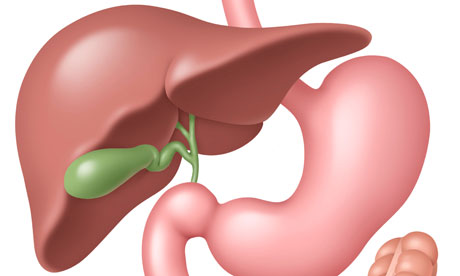
Political correctness has reached medical school. Last week, I was talking to a student about what sort of patients tend to be affected by gallstones. I mentioned the handy, alliterative phrase by which, in my day, we used to remember this at-risk group, and was told in no uncertain terms that medical students didn't talk like that any more.
The gallbladder is a hollow pear-shaped organ, in the right side of the abdominal cavity. Its main job is to store around 50ml of bile, first formed in the liver. After a meal, a hormone prompts the gallbladder to contract, releasing its contents into the duodenum. Once here, bile coats any fat which has been eaten, so facilitating digestion by enzymes.
Gallbladder cancer is the most serious disease to affect this organ. Almost always a disease of old age, it tends to be diagnosed at a late stage, by which time the liver bed is often involved. This makes surgery difficult and the prognosis poor.
Gallstones are much more common, formed from cholesterol, calcium and bile salts. Problems occur when the stones become too big to pass easily through the neck of the gallbladder, or when they get stuck in the duct that drains from the gallbladder into the duodenum. Symptoms may include a temperature, pain in the right upper quarter of the abdomen and jaundice. Sometimes the offending stone will pass by itself. But it may be necessary to remove the gallbladder surgically.
Back when I trained, the arrival of a patient suffering from abdominal pain who happened to be "40, fat, fair, female and fertile" prompted a diagnosis of gallstones.
Gabriel Weston is a surgeon and author of Direct Red: A Surgeon's Story
• This article was amended on 16 November 2011. The original said cholangiocarcinoma is the same as gallbladder cancer. In fact the word refers to cancer of the bile ducts, which drain the gallbladder. This has been corrected.

